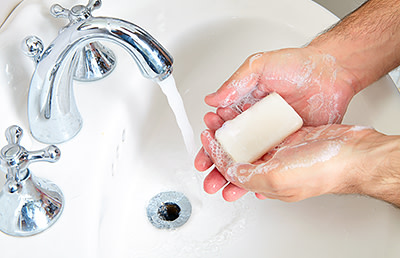Cold sores: Signs and symptoms
Not everyone who catches the virus that causes cold sores has signs or symptoms. If you do, your signs and symptoms will depend on whether you:
Just caught the virus (newly infected)
Have had the virus for some time
The following explains what signs and symptoms develop, and when.
Newly infected
Most people catch the virus when they are a child. Not every child who catches the virus, however, has symptoms. If symptoms occur, the child usually feels sick and has one or more of the following:
A burning sensation in the mouth, followed by painful mouth sores, which can form on the tongue, gums, lips, or throat
Sore throat
Pain when swallowing
Swollen lymph nodes (glands)
Fever
Aches and pains
Headache
Nausea
These symptoms last from one to two weeks.
It’s rare for adults to catch this virus. It’s so common and spreads so easily that most people get it in childhood.
If you catch the virus as an adult, you may or may not have signs and symptoms. If you do, you’ll have the same signs and symptoms as newly infected children. Adults often say they feel like they have the flu and have painful sores inside their mouth.
First outbreak in a young child
When you first catch the virus that causes cold sores, sores appear inside your mouth.

Have had the virus for some time
After you get infected, the virus travels to your nerves and stay there until it reawakens. Even if you never have symptoms, the virus will still travel to your nerves. Because there is currently no cure, the virus lives inside your body permanently.
Even with the virus inside your body, you may never get a cold sore. Some people, however, get cold sores from time to time.
If you get cold sores from time to time, the outbreak tends to be less severe than when you were newly infected. The signs and symptoms also differ.
If you get cold sores, you’ll usually have the following signs and symptoms:
Warnings symptoms begin. A day or two before you get a cold sore, you may feel one or more of the following on your skin where a cold sore will appear.
Some people who have these warning symptoms never get cold sores.
Medicine, which you can buy without a prescription, can shorten how long you have cold sores. You need to apply it at the first sign of a cold sore.

Cold sores appear. One or more painful, fluid-filled blisters appear. These usually form on your lips or around your mouth. They can also appear elsewhere on your face.
If you have a sore near an eye, you should see an eye doctor immediately. The virus can spread to the eyes. Warning signs that this has happened include your eyes becoming sensitive to light or feeling painful. Your eyes may also feel gritty or runny.
If any of these symptoms develop, you need immediate medical treatment. Without treatment, your eyesight could be affected.
Sometimes, blisters appear elsewhere. They can appear on a hand or in the genital area. This can happen when you spread the virus from your mouth to other areas by touching a cold sore and then touching another part of your body.
You can avoid spreading the virus to other parts of your body by not touching another part of your body after touching a cold sore. Washing your hands after touching a cold sore can also help prevent spreading the virus to other parts of your body.You can avoid spreading the virus to other parts of your body by always washing your hands after touching your cold sores.

Sores crust over. Within 48 hours of the warning symptoms, cold sores usually break open. They will ooze fluid and then crust over (form scabs).
In healthy people, most cold sores disappear within 5 to 15 days. They often heal without leaving a scar.
If you have cold sores for longer than 15 days, you should see your primary care doctor or dermatologist. Some people need treatment to get rid of cold sores.
Images
Image 1: Used with permission of the Journal of the American Academy of Dermatology. (J Am Acad Dermatol 2007;57:737-63.)
Images 2 and 3: Getty Images
References
Fatahzadeh M and Schwartz RA. “Human herpes simplex virus infections: Epidemiology, pathogenesis, symptomatology, diagnosis, and management.” J Am Acad Dermatol. 2007;57(5):737-63.
Habif T, Campbell J, Chapman M, et al. In: Dermatology DDxDeck. 2006. Mosby Elsevier. Card #63: Herpes simplex (cold sores, fever blisters).
Marques AR and Strauss SE, “Herpes simplex.” In: Bolognia JL, et al. Dermatology. (second edition). Mosby Elsevier, Spain, 2008:1873-5.
 Atopic dermatitis: More FDA-approved treatments
Atopic dermatitis: More FDA-approved treatments
 Biosimilars: 14 FAQs
Biosimilars: 14 FAQs
 How to trim your nails
How to trim your nails
 Relieve uncontrollably itchy skin
Relieve uncontrollably itchy skin
 Fade dark spots
Fade dark spots
 Untreatable razor bumps or acne?
Untreatable razor bumps or acne?
 Tattoo removal
Tattoo removal
 Scar treatment
Scar treatment
 Free materials to help raise skin cancer awareness
Free materials to help raise skin cancer awareness
 Dermatologist-approved lesson plans, activities you can use
Dermatologist-approved lesson plans, activities you can use
 Find a Dermatologist
Find a Dermatologist
 What is a dermatologist?
What is a dermatologist?
